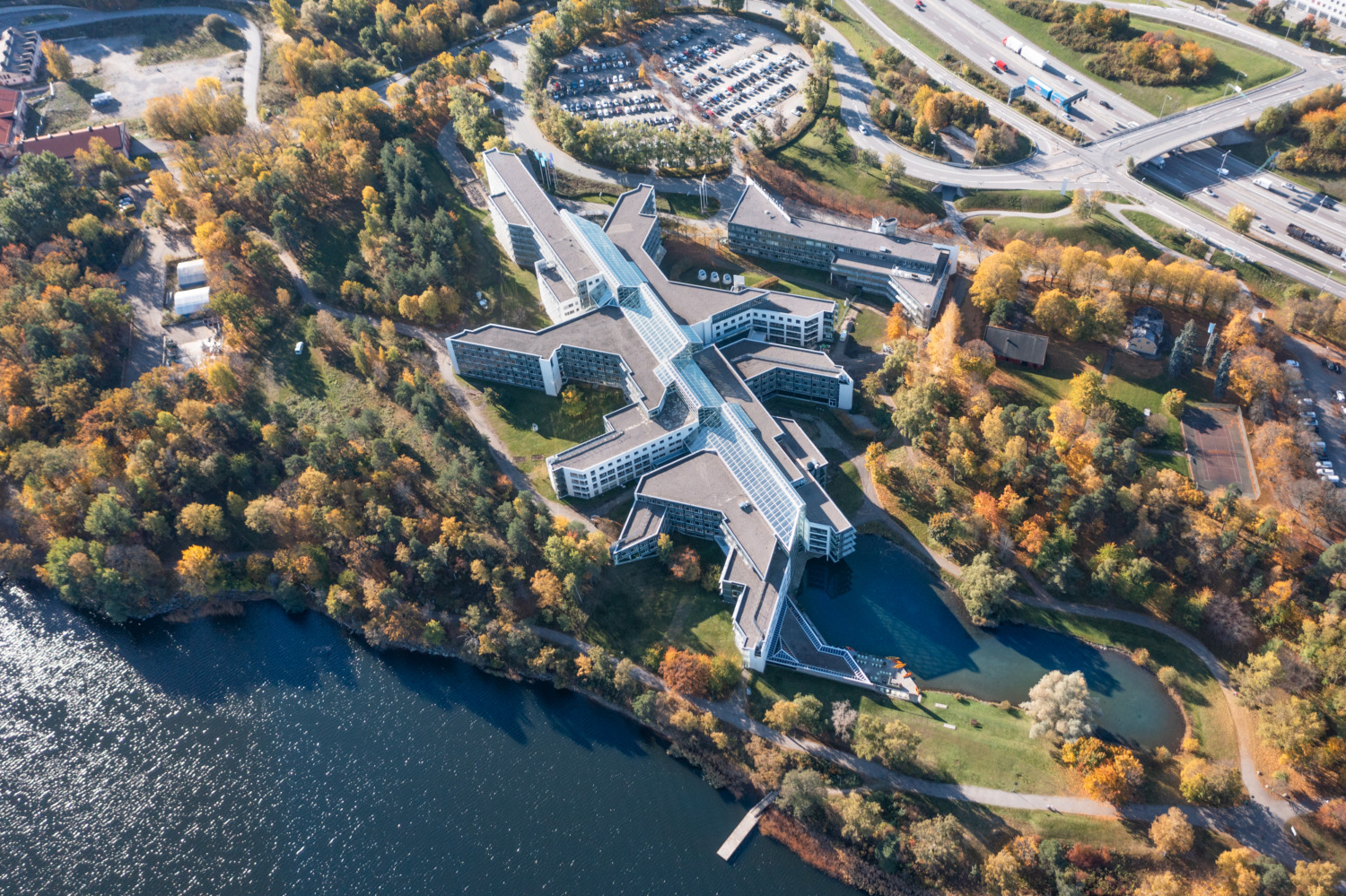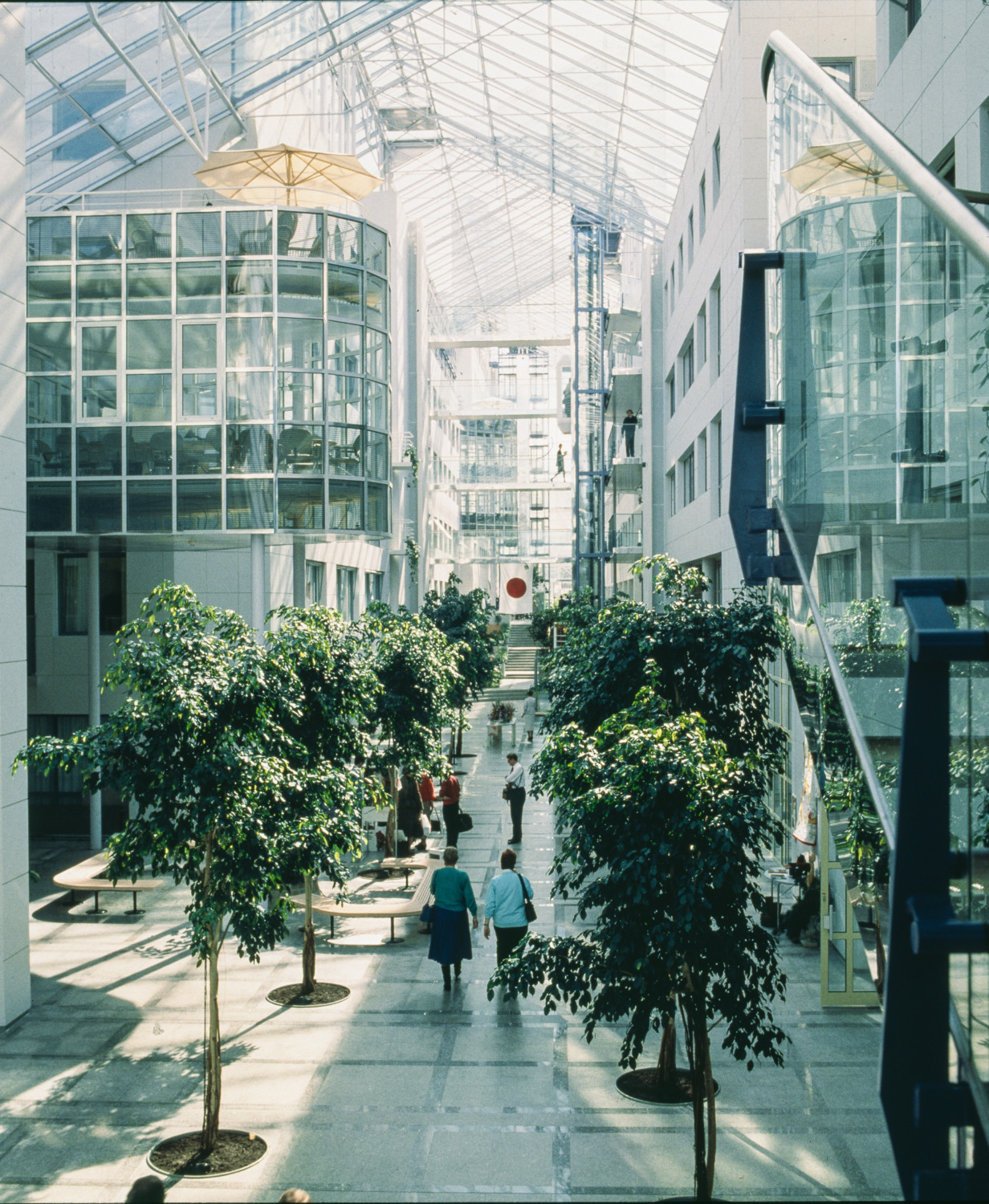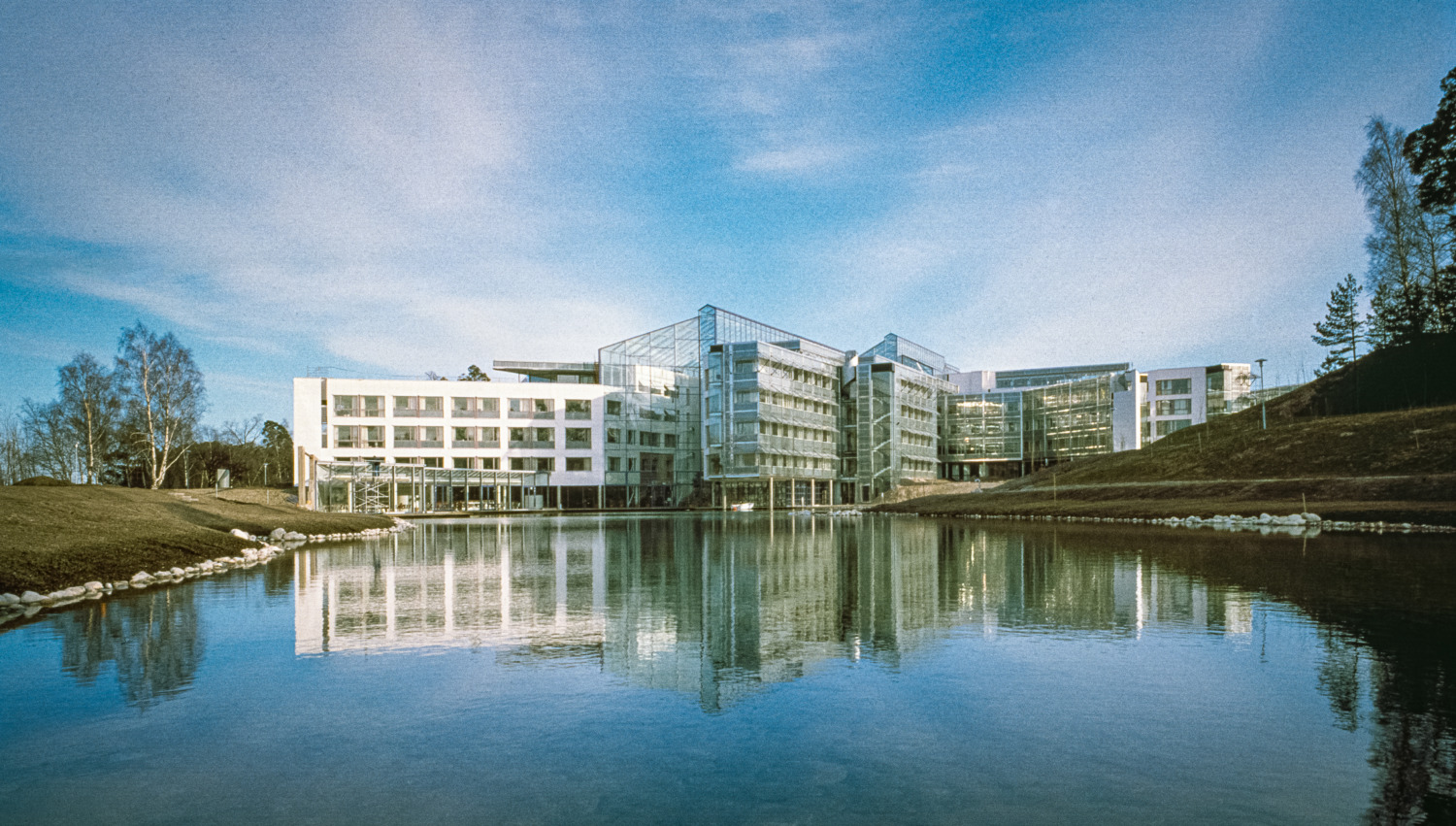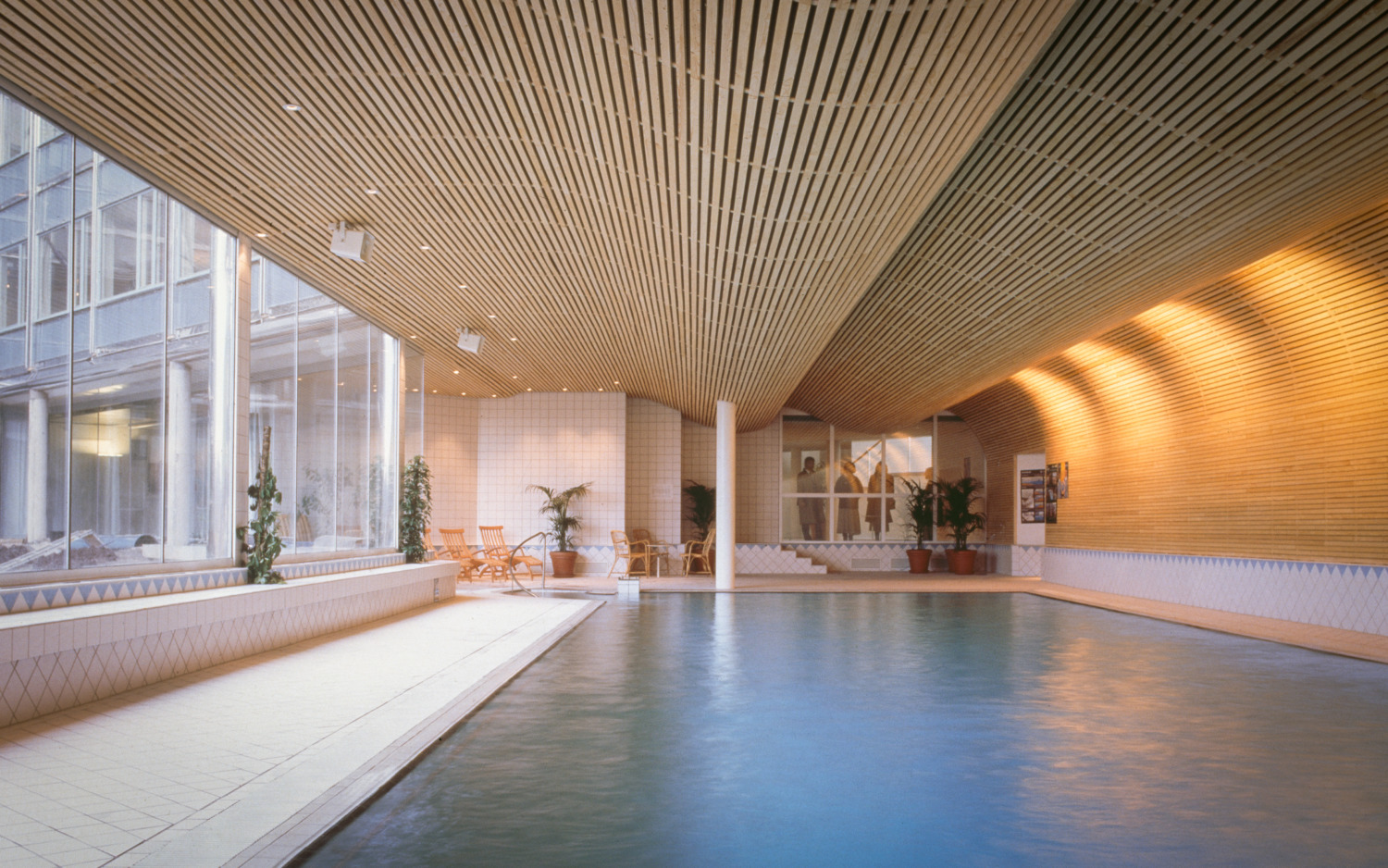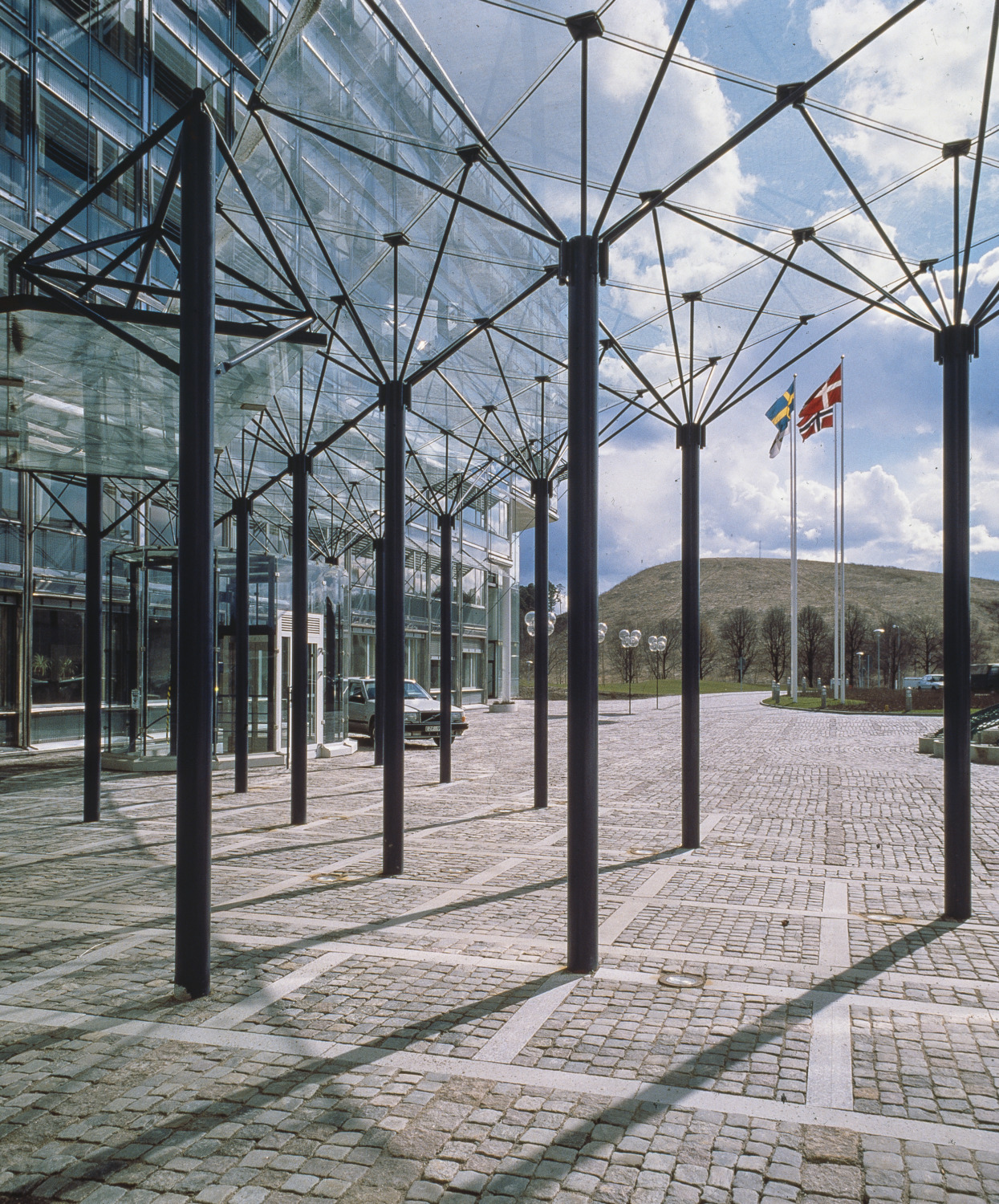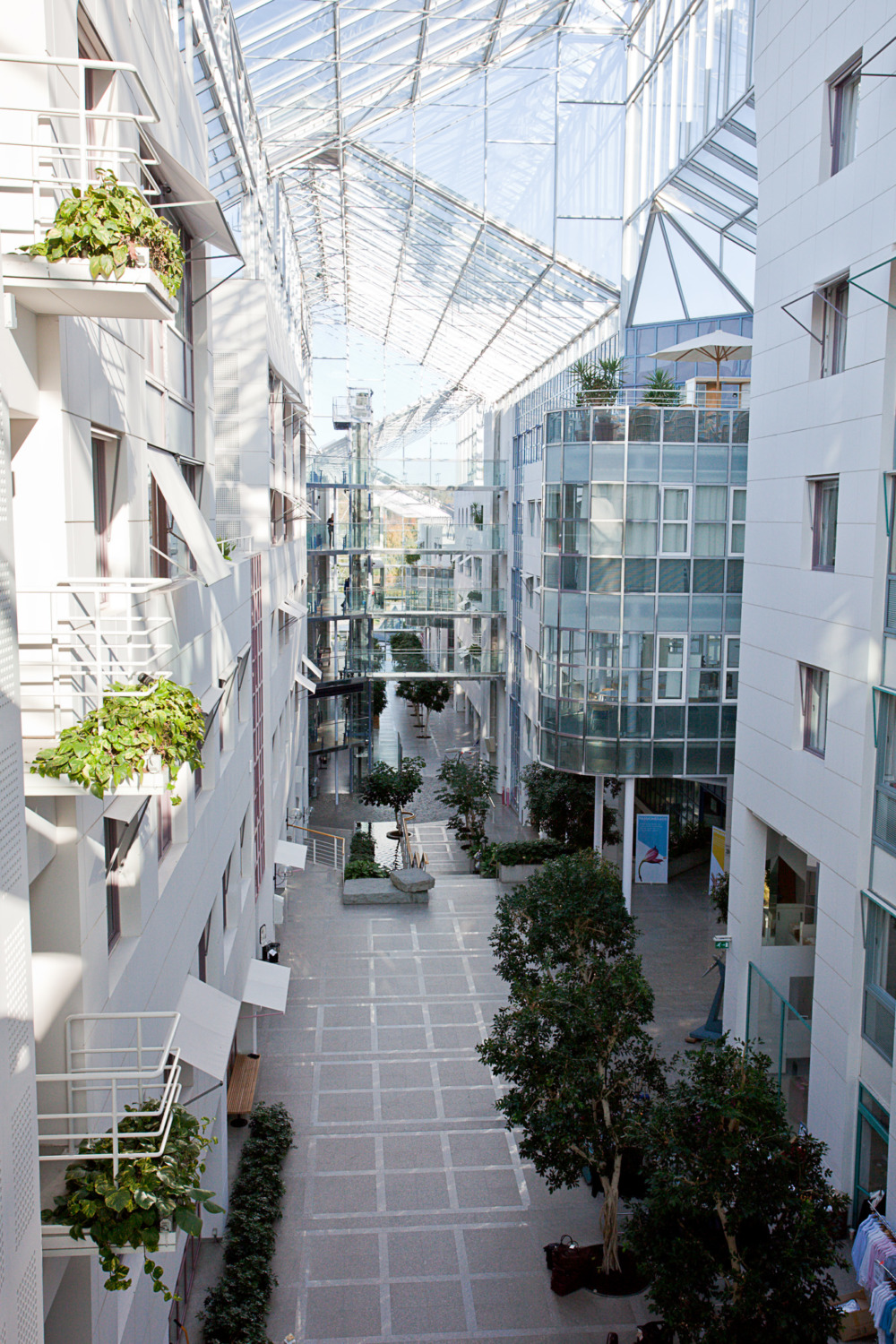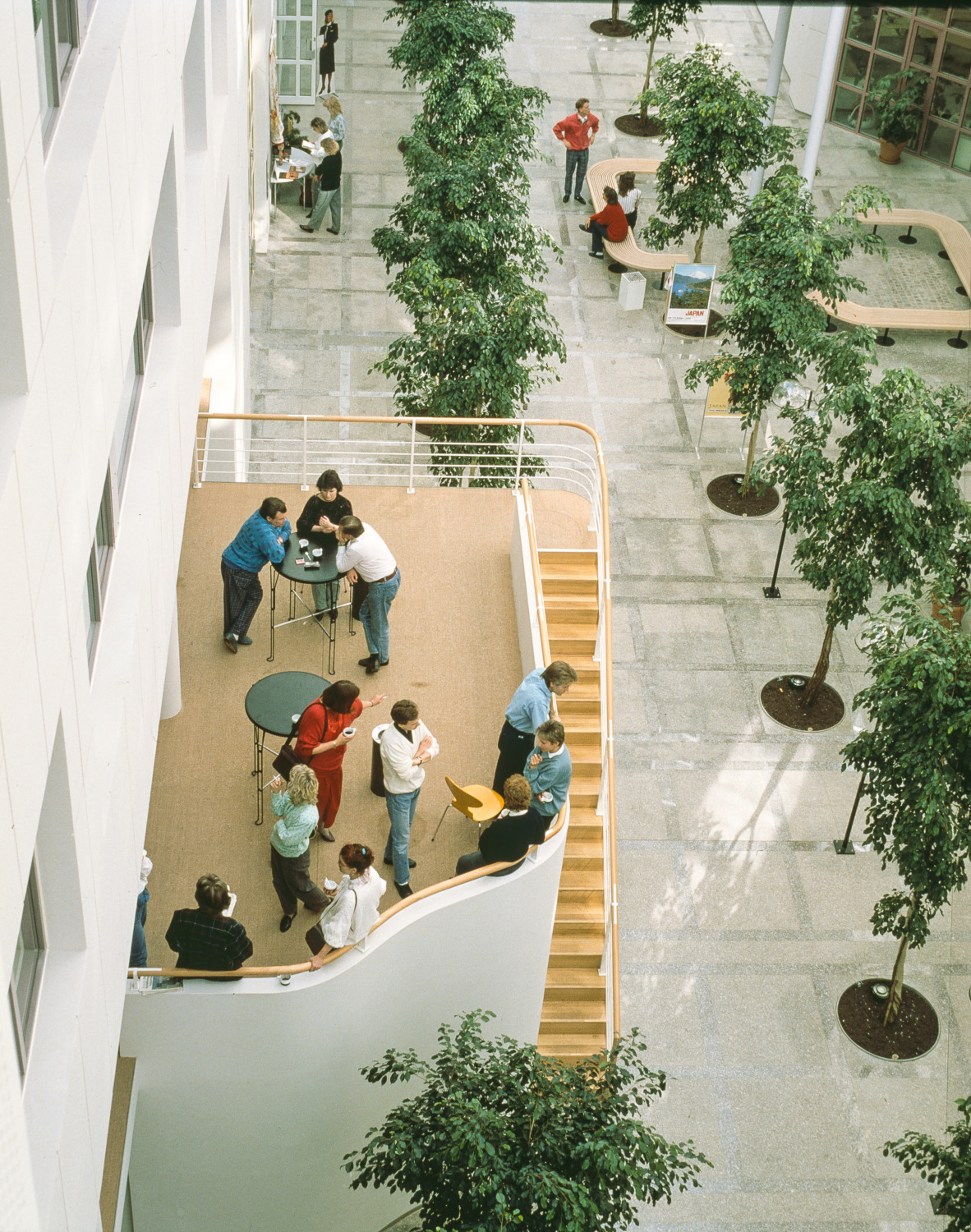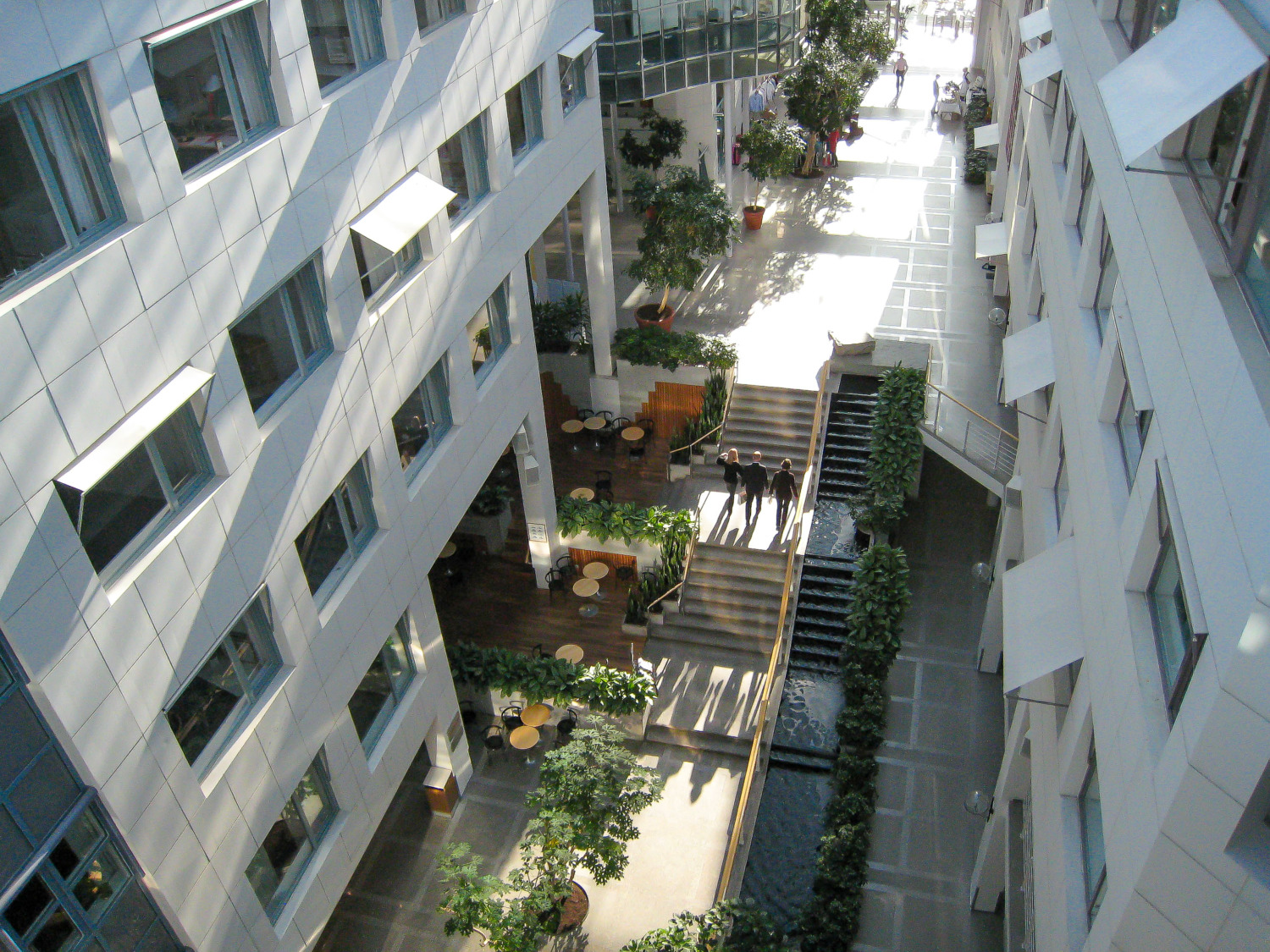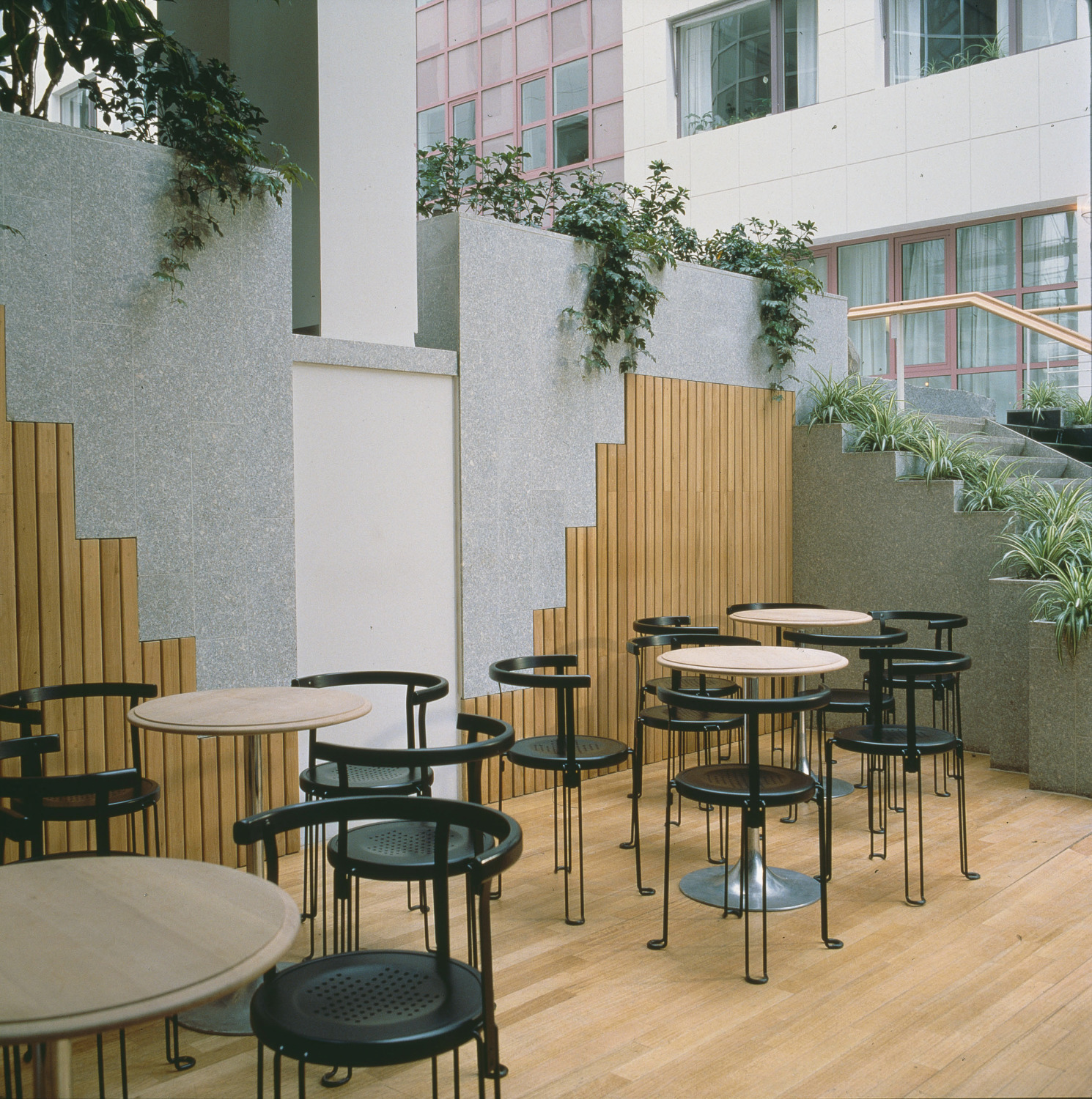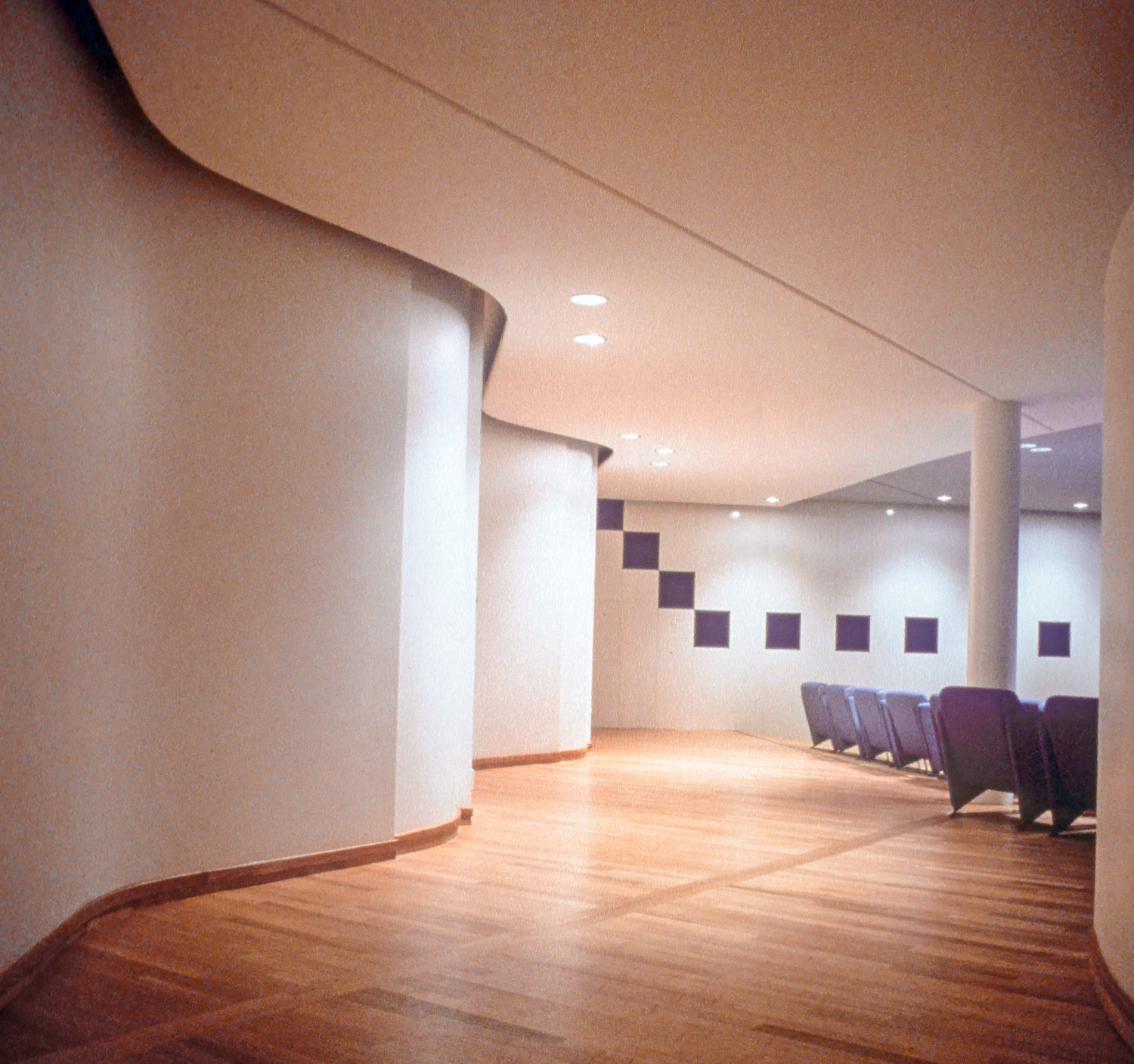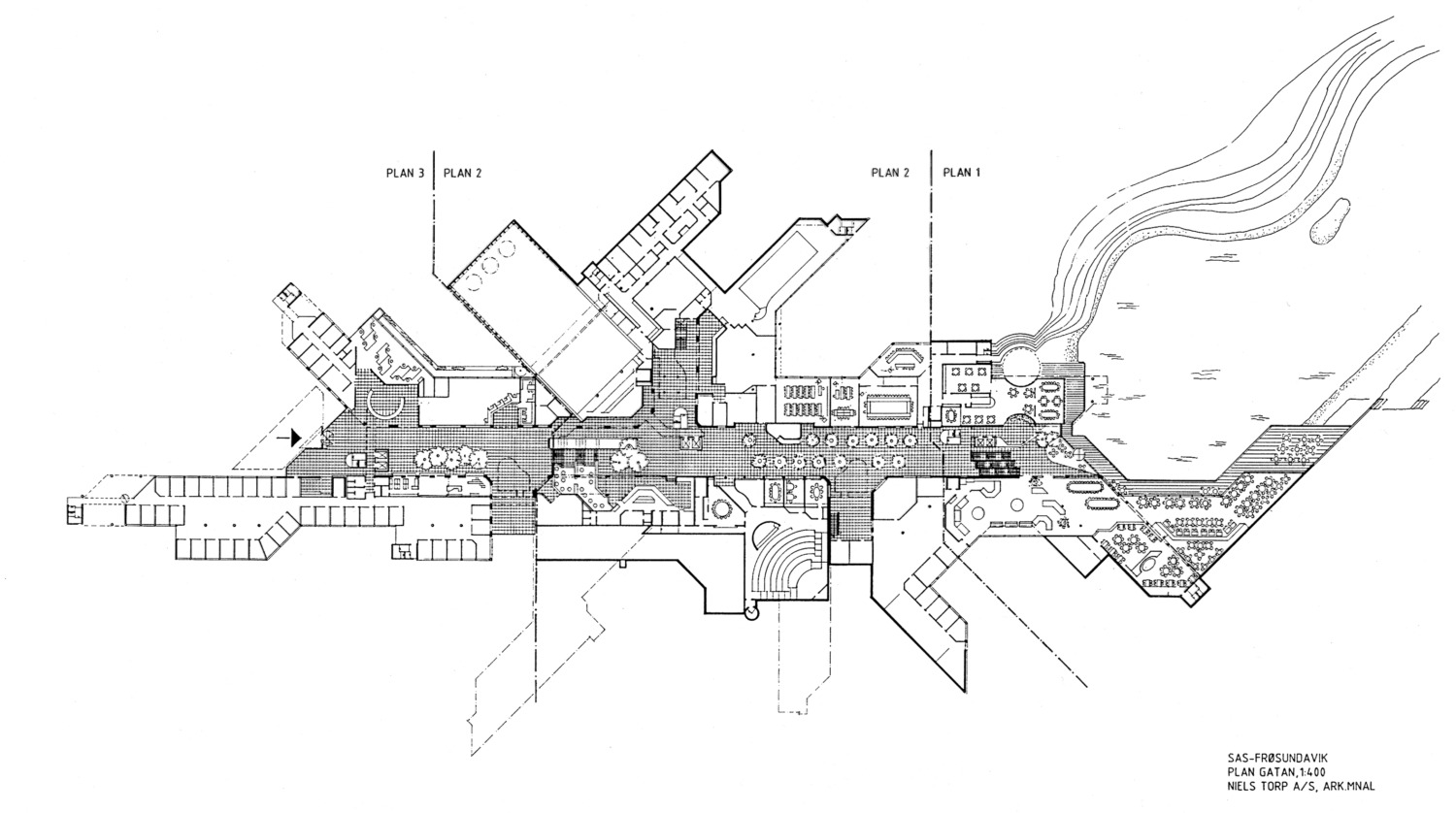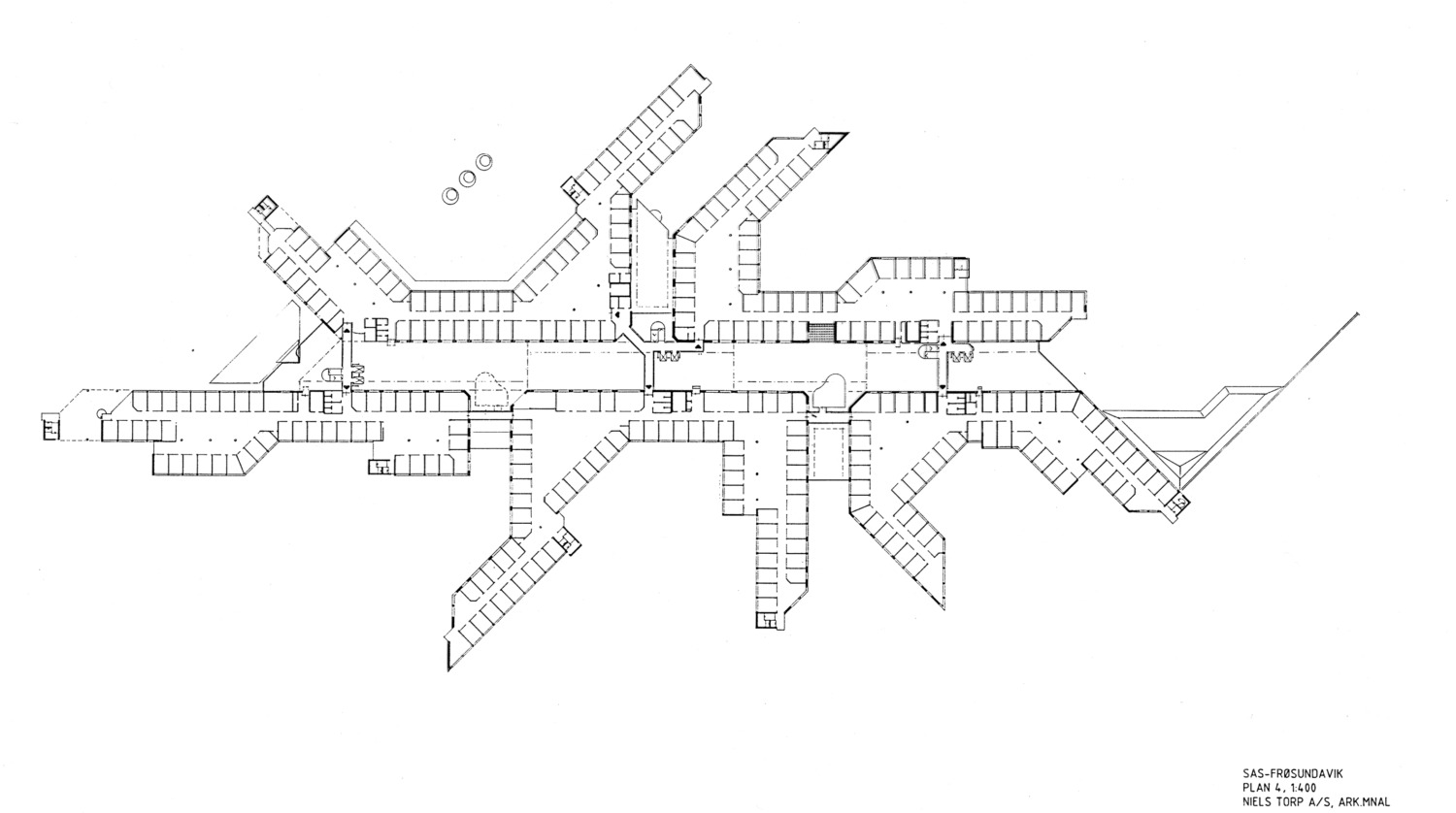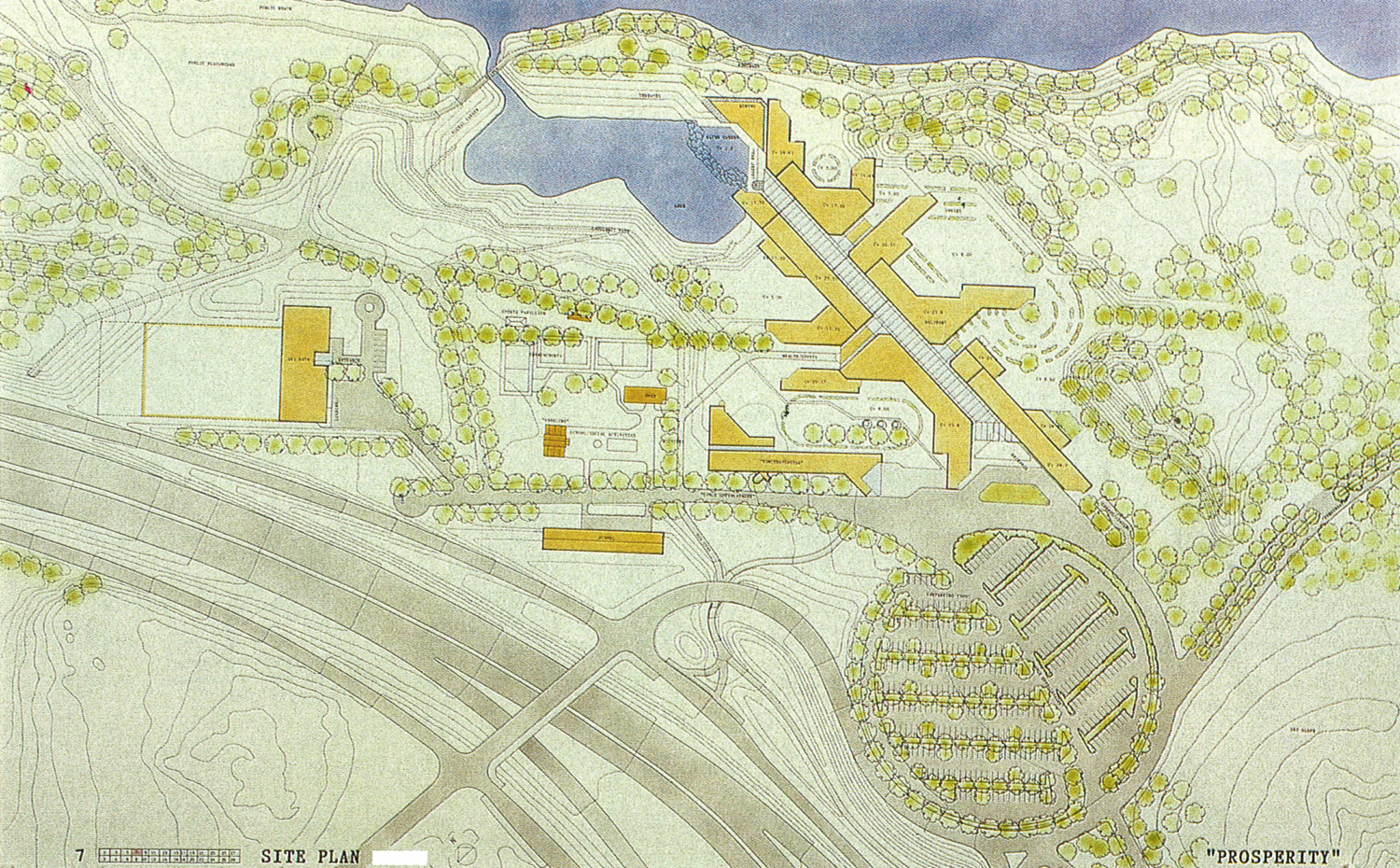SAS-hovedkvarteret ble oppfattet som en bystruktur, et mikrosamfunn for kolleger med en uformell hovedgate som forbinder individuelle bygninger: et sted snarere enn en bygning.
Et møte med «SAS-samfunnet» er uformelt og avslappet ettersom hovedgaten åpner seg mot deg og trinnvis går ned til den lille innsjøen i den andre enden. Bygningene har alle sine egne kjennetegn, som fører en dialog og henvender seg til hverandre på tvers av gaten fra sine terrasser, gallerier, balkonger og gangbroer. Stimulering vekkes på tvers og langs gaten. Vi har delegert alle funksjoner og aktiviteter som genererer trafikk langs gaten – den blir til det sosiale rommet for beboerne i dette SAS-samfunnet. Gaterommet endrer karakter og funksjon flere ganger i løpet av dagen. Alle ansatte deltar i den daglige rytmen, vandrer blant arbeidsplasser og de mange delte funksjonene som lokker til et besøk til gaterommet, hvor et svømme- og et idrettshall sentralt er plassert i fasilitetene, omgitt av møterom, et auditorium, butikker og en kafé. Gaterommet er et robust volum med en utendørs atmosfære, merket av endringene i dagslys fra soloppgang til solnedgang og kveld.
Broer, trapper, heiser og frittstående bygninger for møter er skapt i delikate stålkonstruksjoner og deler visuelt det lange rommet inn i soner. Elementer er flomlysbelyst og fungerer som lysarmaturer i denne store hallen. Fra kombinasjonskontorområdet på en arbeidsstasjon utvikles en gradvis økende interaksjon via multirom, interne møterom, møteromstårn, gangbroer og sidegater til hovedgaten. Interiøret er åpent, transparent og innbydende.
Tomten er eksponert og sårbar. Bygningen ble konstruert på en eiendom som inneholdt en grushaug, som ble helt fjernet slik at bygningenes synkende gesimshøyder er på nivå med den tidligere silhuetten av gruskilden. For å unngå et inngrep i landskapet rundt Brunnsviken, ble vannflaten ført inn i bygningen ved hjelp av en utgravd dam som skaper et bakgrunnsmotiv sammen med restauranten.

